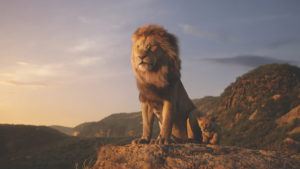In a recent op-ed piece in the New York Times, Martin Scorsese bemoaned the Marvel Universe takeover of Hollywood. He’s right to do so, but it’s a process that has been going on for years. The fact that Scorsese’s new film, The Irishman, was funded by Netflix and will have a limited run in theaters was the only way he could get the Hollywood-sized budget that he was seeking. For the most part, mainstream Hollywood drama, with big stars and big production values, is no longer economically viable. It exists in independent films with very low budgets. And it exists on streaming channels such as Netflix and Amazon and on cable TV in mostly serialized form. The upshot, according to Scorsese: Hollywood was no longer interested in taking creative risks.
The Farewell, which has recently been released on DVD and streaming channels, is a case in point. This bittersweet family comedy about a Chinese grandmother who is diagnosed with cancer but never told that she has it, is the kind of comedy Hollywood might have produced itself 40 or 50 years ago. But a few things might have gotten in the way: The Farewell was written and directed by Lulu Wang, an Asian-American woman, and it has an Asian-American cast.
Since the grandmother lives in China, much of the dialogue is in Mandarin with subtitles. And though the central role of the film is played by a rising young comedian and actor, Awkwafina, The Farewell had its premiere at Sundance and was released mostly at art house theaters over the summer (it played at the Provincetown International Film Festival and later at the Waters Edge Cinema). It was sold at Sundance for $7 million and made about $20 million at the box office. That’s chump change in Hollywood, no matter how profitable.

It should be noted that the far more commercially plotted movie Crazy Rich Asians, which also featured an Awkwafina performance and a mostly Asian-American cast, cost $30 million to make and was released by a major studio, Warner Bros. It grossed a whopping $240 million. Scorsese notwithstanding, the mid-level movie is not quite dead in Hollywood.
But it’s unfair to compare The Farewell to Crazy Rich Asians: in scale and design, the former is clearly an art house film. Its central conceit — to hold a wedding in China for Grandma’s sake, an elaborate ruse to surround her with relatives yet keep her in the dark about her illness — recalls the German movie Goodbye, Lenin! In that film, a son stages a fantasy world in his mother’s bedroom to keep her from realizing that East Germany no longer exists, because, he believes, it will give her a fatal heart attack.
The Farewell was produced with grace and restraint. The performances are understated; the laughs aren’t pushed. Even the feel-good twist at the end, which upends the entire plot, is subtly presented. It’s not edgy, but it’s a lovely film, one which everyone should have an opportunity to see on a big screen or small.
Two recent Hollywood blockbusters both on DVD or streaming, The Lion King and Toy Story 4, are also cases in point, largely justifying Scorsese’s lament.
When the original 2D animated version of The Lion King was released in 1994, it heralded the peak (and the end) of Disney’s second golden age. The story was primal and powerful, the score by Elton John was solid and hummable, and the animation itself, especially in the movie’s cold opening with the song “Circle of Life,” was downright thrilling.

The 2019 version, directed by Jon Favreau, is pretty much the same movie, but subbing for the hand-drawn animation are computer-generated animals that look entirely real. Likewise, the backgrounds and locations look entirely real. So real, in fact, that the some of the built-in problems with the story nearly undo it. For instance, how is it possible that cute anthropomorphic animals who speak English actually eat other English-speaking anthropomorphic animals as part of this “Circle of Life” thing?
In hand-drawn animation, it’s easy to go with the fantasy, and talking animals are fine. In CG Africa, it takes a lot longer to get used to that. The more real the movie feels, the harder it gets to reconcile its celebration of monarchy and patriarchy. Hand-drawn animation feels like a fairy tale, and that makes it easier to ignore (and subvert) regressive ideology. So, Favreau pumps up the female roles a bit. And having Beyoncé voicing Nala certainly helps. By the end of the film, the story wins out: its power is transcendent. The box office tells a story, too: $1.6 billion worldwide.
The problem is, per Scorsese: where’s the creativity? It’s just a modernized rehash. Competent, but no fireworks.
The same can be said for Toy Story 4, which finally and thoroughly exhausts the brilliant idea behind the Toy Story franchise: that toys are like pets, bound to their child masters, and existential about their mission. Animated toys are a perfect metaphor for animation itself: it creates life out of inanimate materials.

In Toy Story 4, there are several groups of toys in various locations. Some have gone rogue — unattached to humans — a choice that Tom Hanks’s cowboy, Woody, must ultimately face. A new character, Forky (voiced by Tony Hale), made out of trash, is charming, and the Pixar animation is, as always, top-notch. But the story for this fourth movie based on the same characters is, unfortunately, way too complicated. Pixar storytelling had always been bravely simple, with no gimmicks or smokescreens to cloud the genuine sentiment. No more.
Toy Story has been reworked ad nauseum. Now that Pixar honcho John Lasseter has been forcefully retired due to #MeToo accusations, maybe it’s time to retire his signature franchise. Why not let a once-great series of films, filled with passion and artistry, die with dignity?
